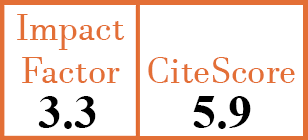Full Papers
Clinical profiles differ in IgG4-related disease with and without allergy: a large case-control study in China
Z. Zhao1, Y. Liu2, M. Bai3, Q. Zeng4, Z. Wang5, D. Chen6, Z. Li7, Y. Su8
- Department of Rheumatology and Immunology, Peking University People’s Hospital, Beijing, and Department of Rheumatology and Immunology, Henan Provincial People’s Hospital, People’s Hospital of Zhengzhou University, People’s Hospital of Henan University, Zhengzhou, China.
- Department of Rheumatology and Immunology, Peking University People’s Hospital, Beijing, and Department of Rheumatology and Immunology, Beijing Friendship Hospital, Capital Medical University, Beijing, China. 57495011@qq.com
- Department of Rheumatology and Immunology, Peking University People’s Hospital, Beijing, and Department of Rheumatology and Immunology, Beijing Friendship Hospital, Capital Medical University, Beijing, China.
- Department of Rheumatology and Immunology, Peking University People’s Hospital, Beijing, China.
- Department of Rheumatology and Immunology, Peking University People’s Hospital, Beijing, China.
- Department of Rheumatology and Immunology, Peking University People’s Hospital, Beijing, China.
- Department of Rheumatology and Immunology, Peking University People’s Hospital, Beijing, China. zgli99@aliyun.com
- Department of Rheumatology and Immunology, Peking University People’s Hospital, Beijing, China. suyin0921@163.com
CER16219
2023 Vol.41, N°9
PI 1808, PF 1814
Full Papers
PMID: 36826798 [PubMed]
Received: 19/09/2022
Accepted : 04/01/2023
In Press: 11/02/2023
Published: 17/08/2023
Abstract
OBJECTIVES:
This study aimed to elucidate different clinical profiles in IgG4-related disease (IgG4-RD) with and without allergy.
METHODS:
Four hundred and thirty-four patients diagnosed with IgG4-RD at Peking University People’s Hospital were included. Clinical and treatment options-based relapse data were collected and compared between IgG4-RD patients with and without allergy.
RESULTS:
Among these patients, 214 (49.3%) had allergic diseases. Most of the IgG4-RD patients with allergy had initial involved organs directly exposed to ambient air and their allergic symptoms occurred mostly before or at IgG4-RD disease onset. Compared with IgG4-RD patients without allergy, allergic patients had almost equal sex ratio, more organ involvement, earlier ages of disease onset and diagnosis, longer disease duration, higher incidence of dacryoadenitis, sialadenitis, lymphadenopathy, paranasal sinus and lung lesions. Higher serum IgG4, IgE and IgG4/IgG ratio, lower serum C3 complement 3 (C3) and C4, and higher incidence of eosinophilia were also found in IgG4-RD patients with allergy. Furthermore, allergy may increase relapse rate and shorten relapse-free survival time in IgG4-RD patients treated with glucocorticoids only, whereas combination therapy of glucocorticoids and immunosuppressants could improve treatment outcome.
CONCLUSIONS:
Allergy leads to disparities in clinical profiles in IgG4-RD patients. Allergy could result in higher relapse rate and shorten relapse-free survival time in patients receiving glucocorticoids only.


